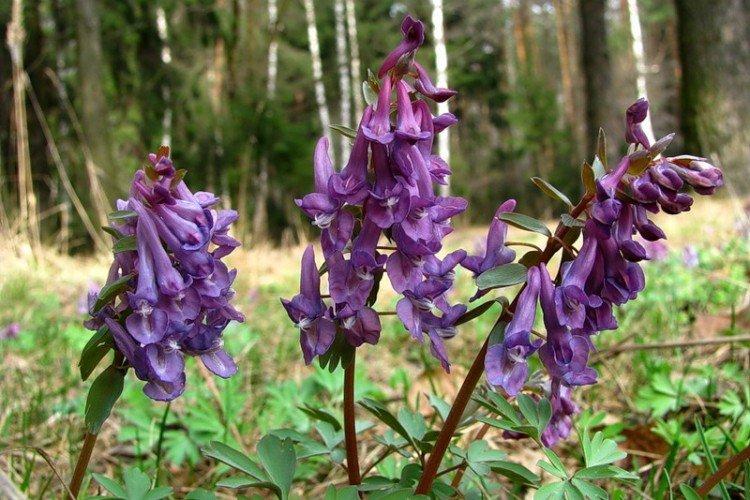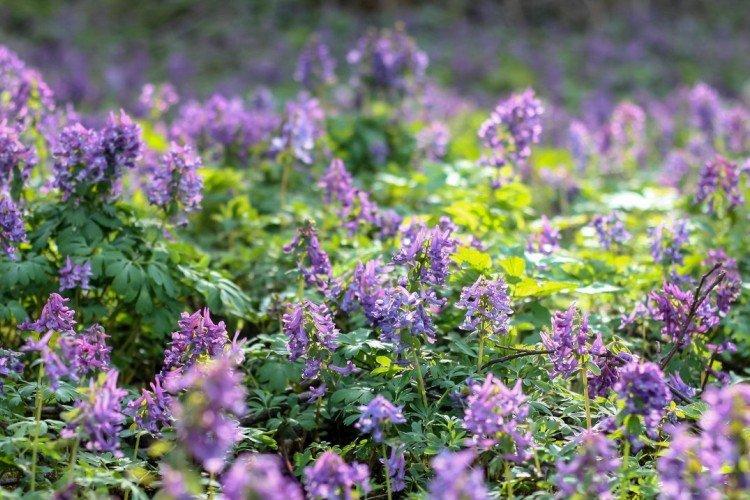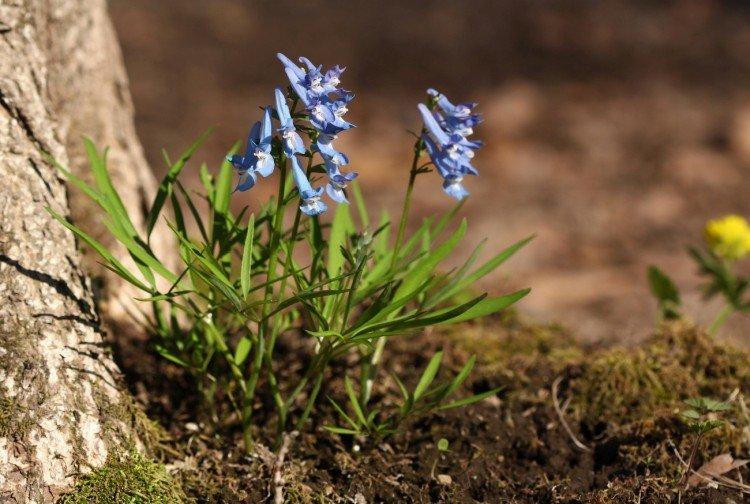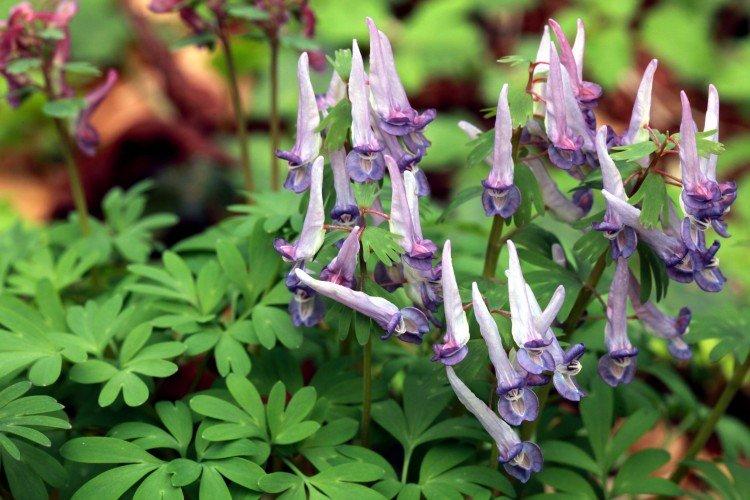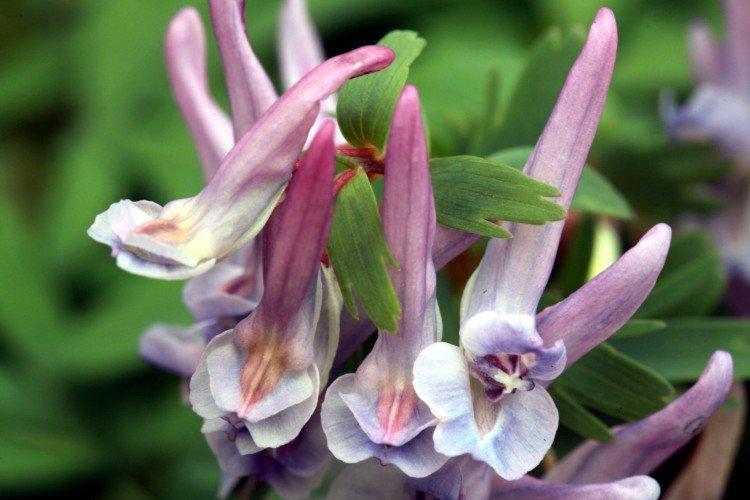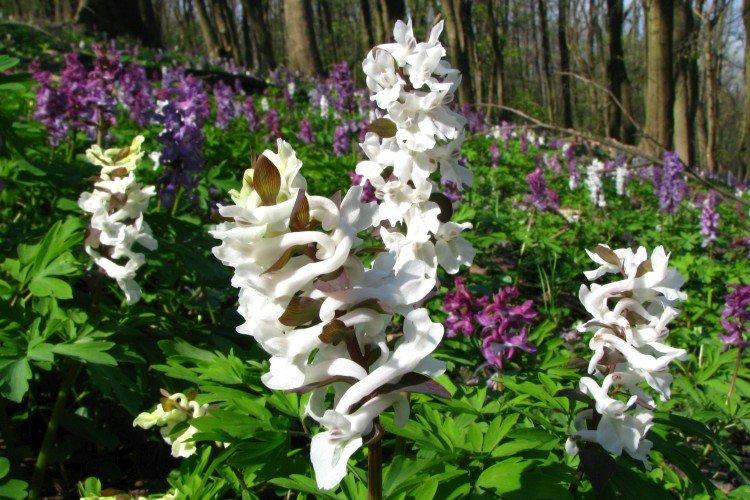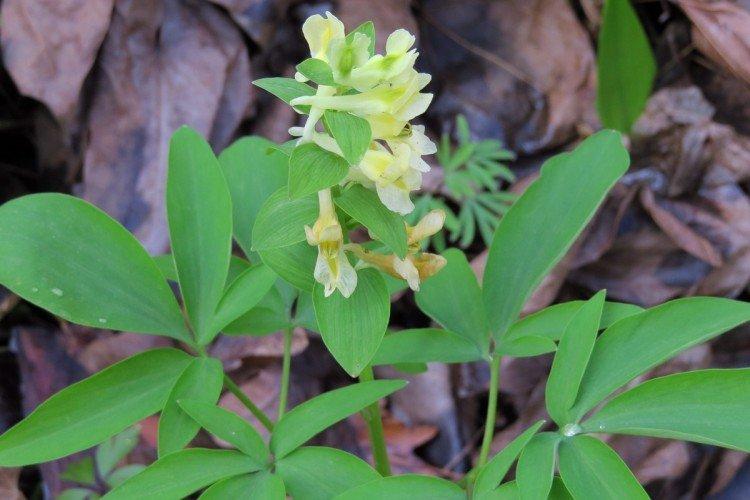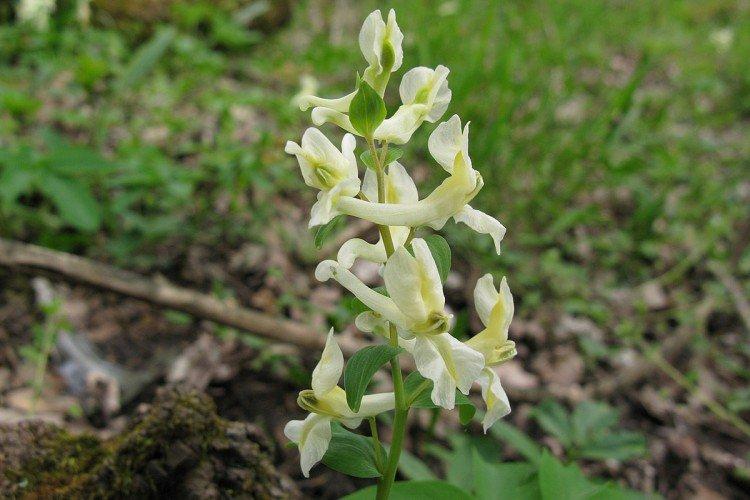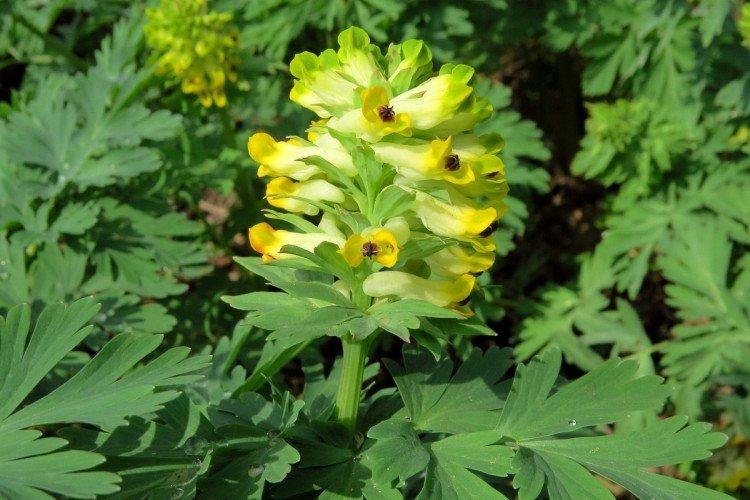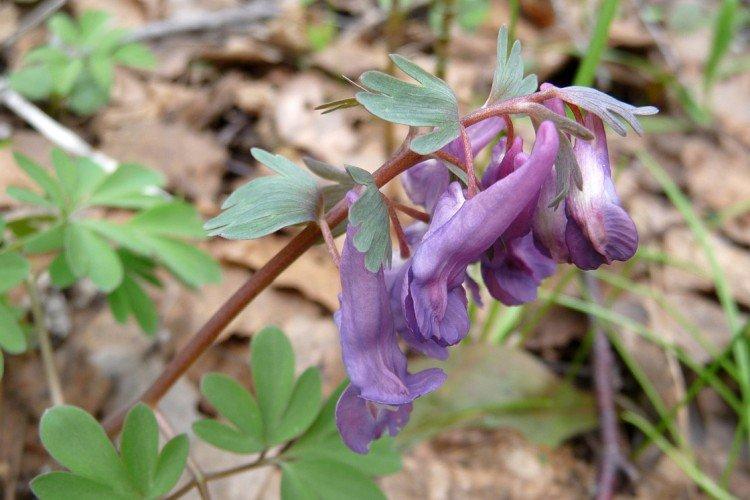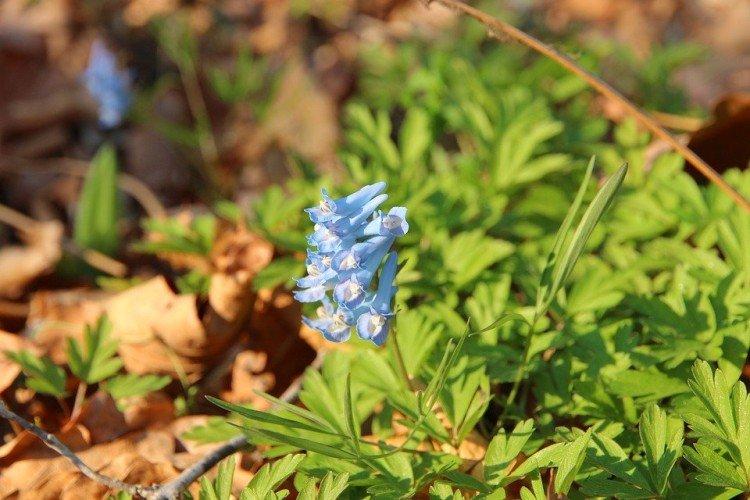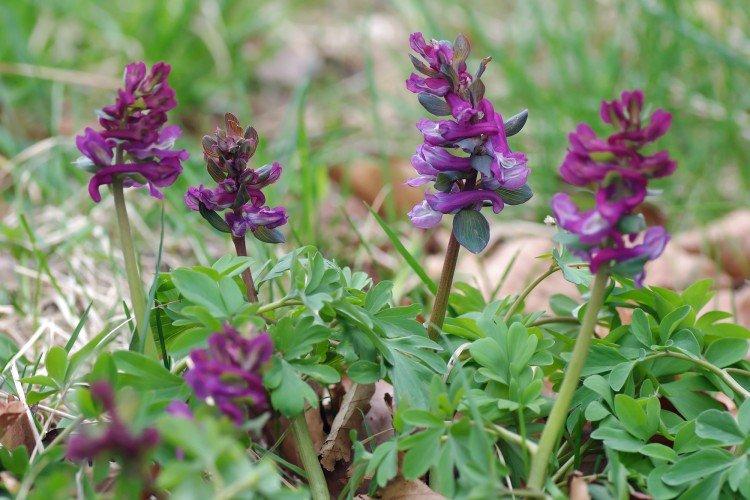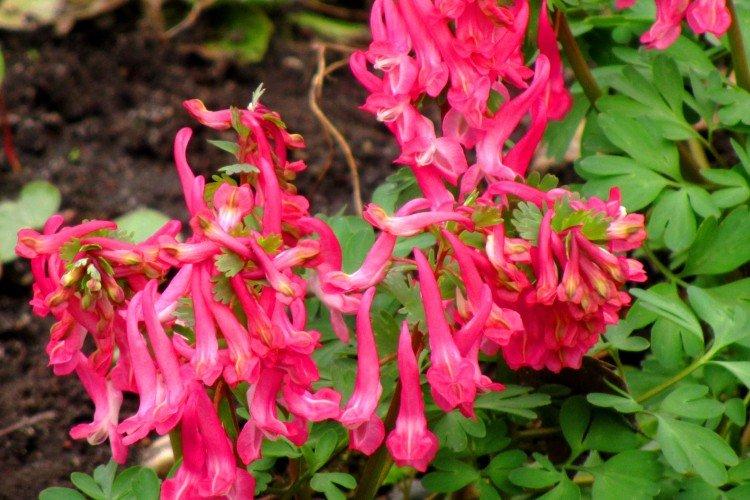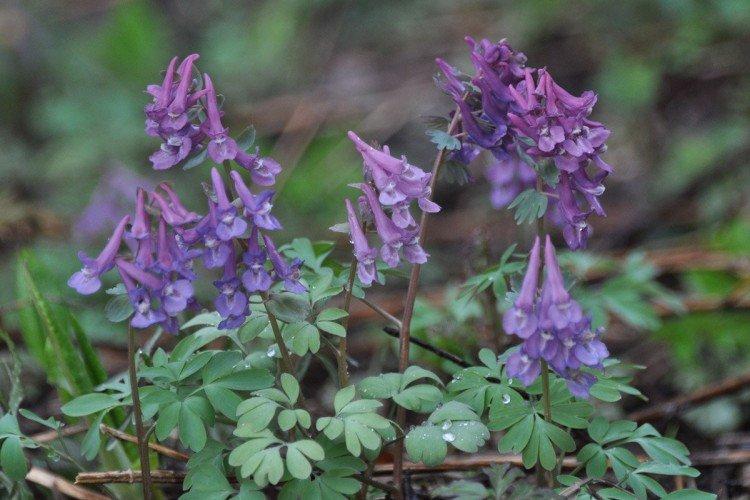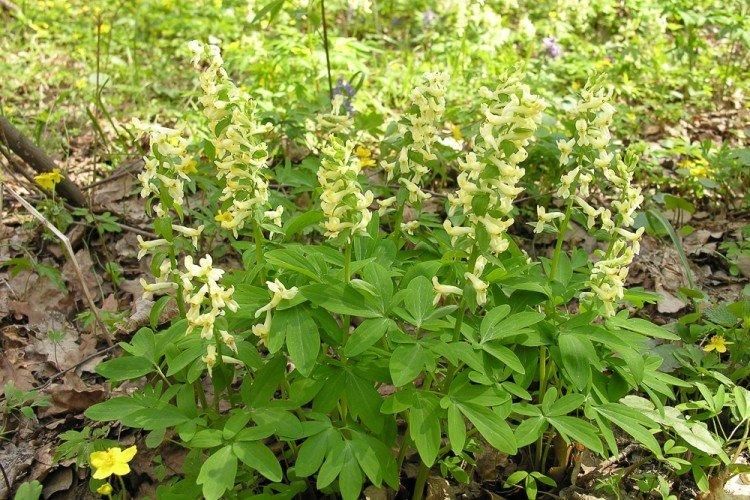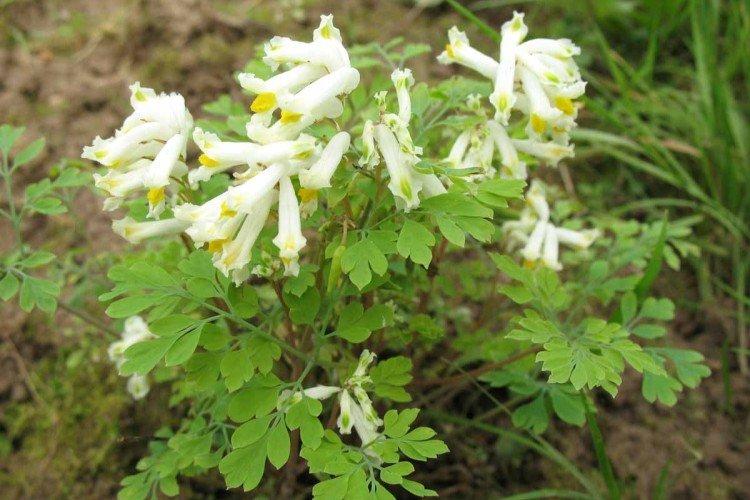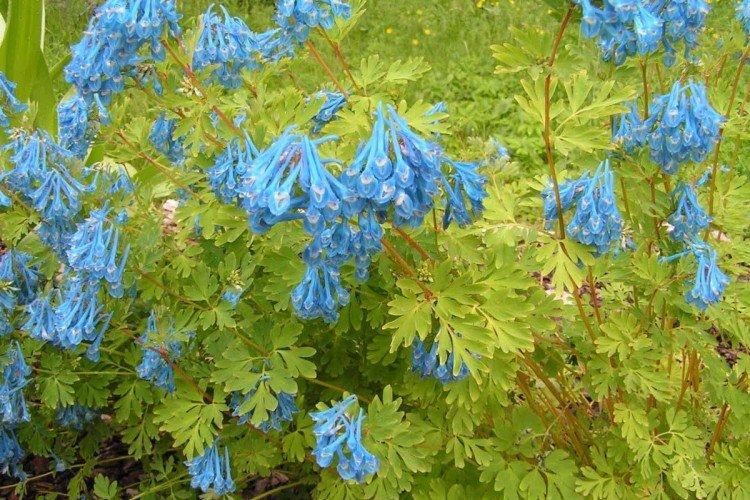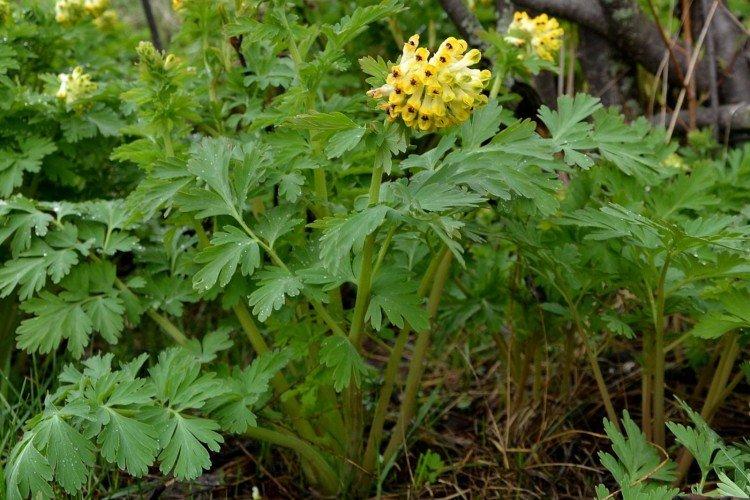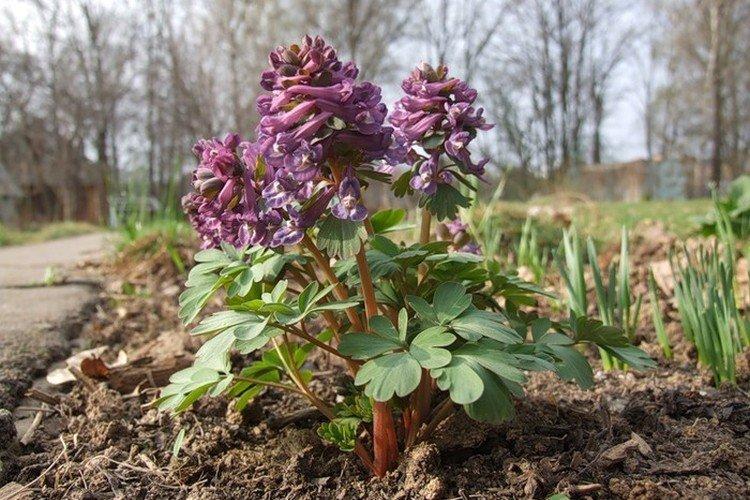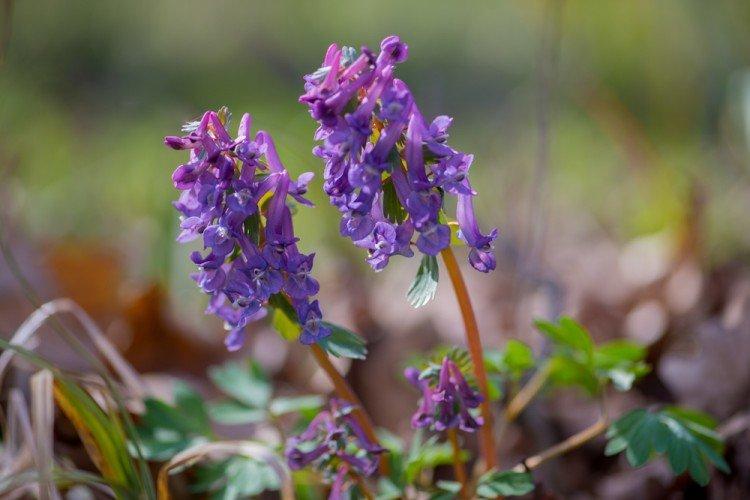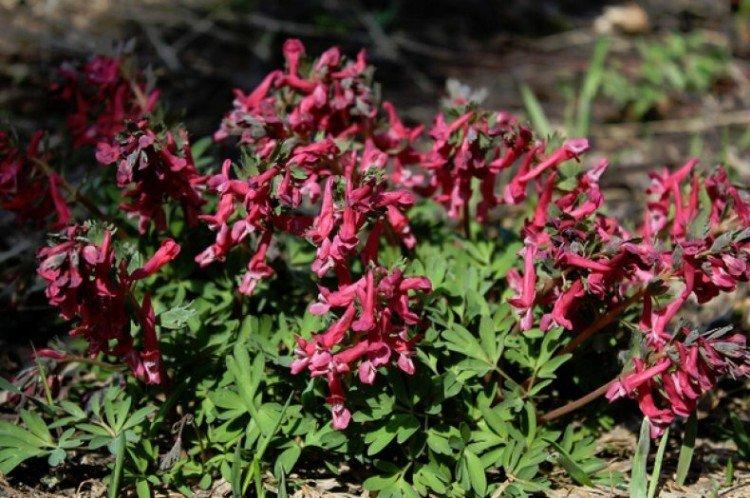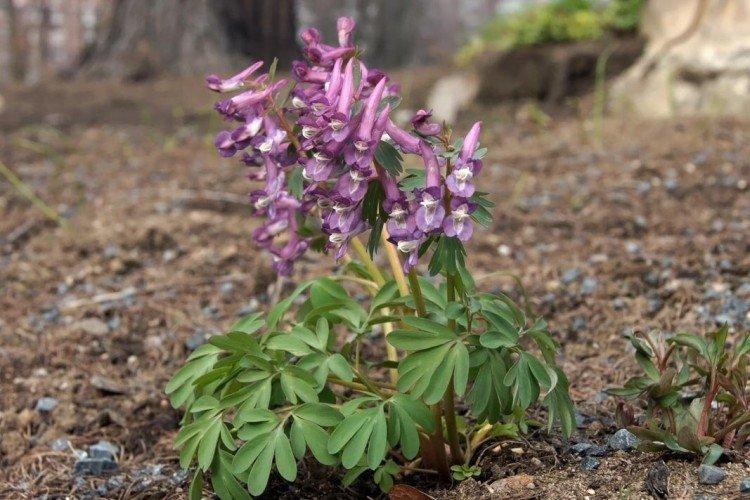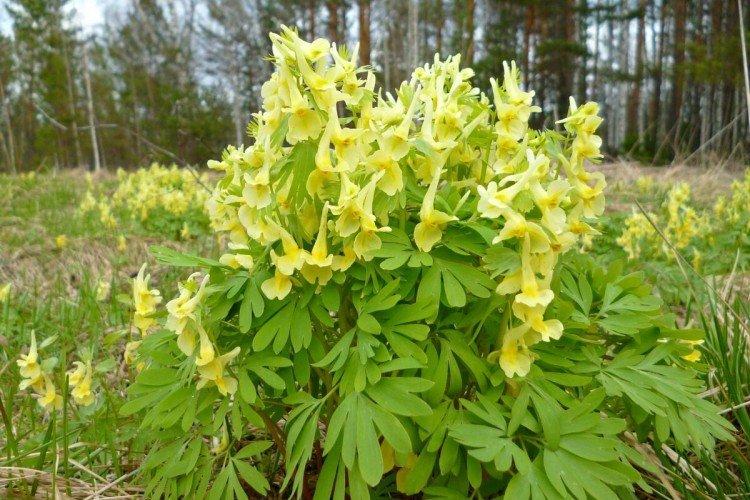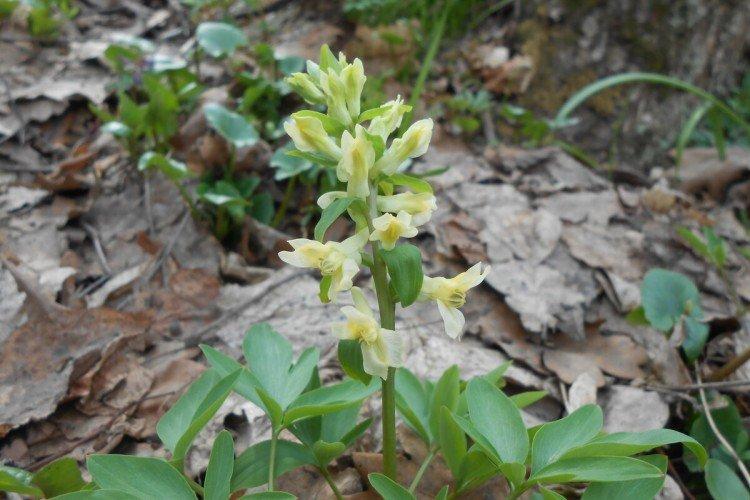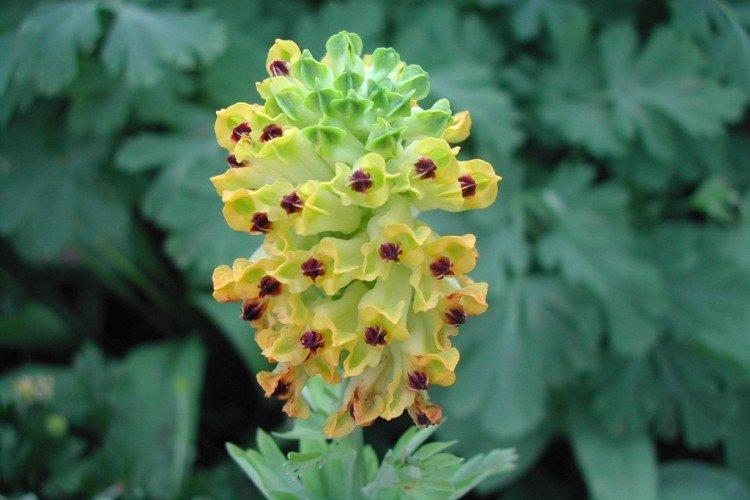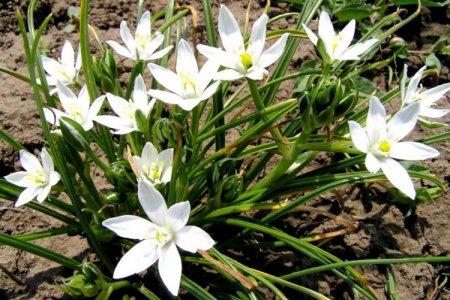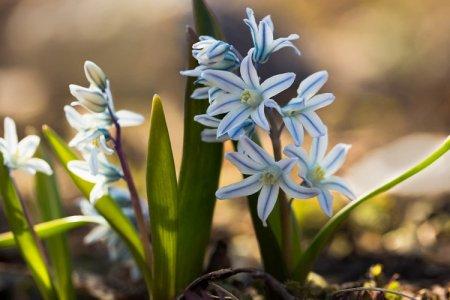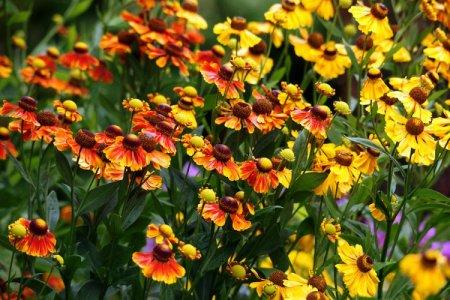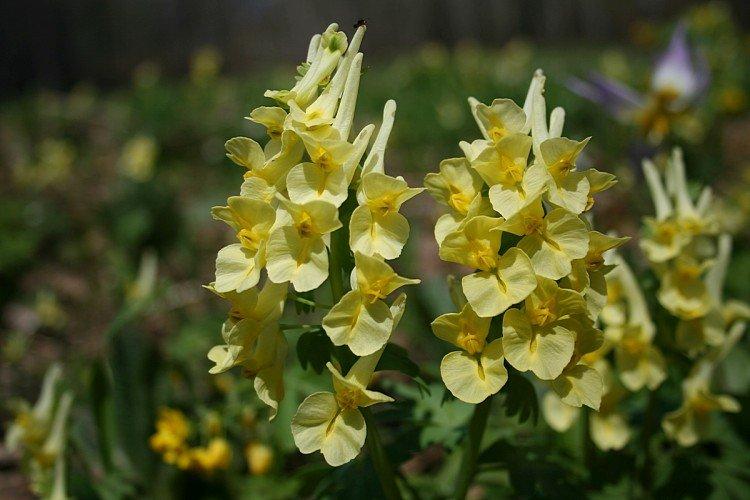
If you like unusual flowering bells, check out the crested crested bird! Graceful bushes dilute the lawn and blend harmoniously into complex flower arrangements. And the crested hen also knows how to surprise - for example, can you believe that it belongs to poppies?
general information
The herbaceous corydalis is distributed throughout the Northern Hemisphere and is perfectly adapted to our climate. It blooms early and very profusely, is famous for its healing properties and is completely unpretentious.
Corydalis stems rarely grow taller than 45 cm, but the root system is surprisingly powerful and branched. It goes deep underground and is covered with tuberous outgrowths, which ensures such endurance of the plant, and at the same time helps to overwinter perennial varieties.
The carved leaves of the corydalis resemble a miniature fern. Against the background of their silvery-bluish bloom, racemose inflorescences look even brighter. Each has up to 35 tubular bells in all shades of white, yellow, pink and purple. Corydalis blooms in April.
All types of Corydalis are used in folk medicine. Also, young leaves can be used for culinary purposes. The delicate aroma of flowers attracts beneficial insects, and in general, the corydalis is a good honey plant.
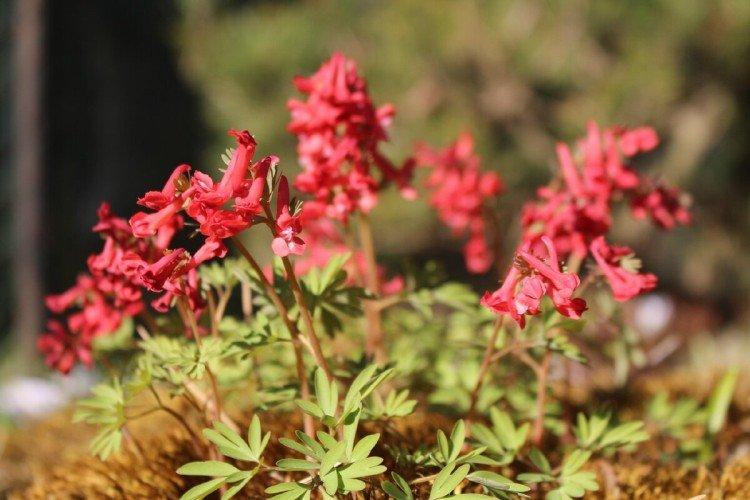
Corydalis species
Basically, Corydalis are classified according to the region of growth, because the number of their species has long exceeded 300. In Russian gardens, forms of the forest Corydalis are most often used.
Noble crested
It is a vigorous rhizomatous species up to 80 cm in height with bright toothed leaves. Yellow flowers with a dark border are collected in dense dense apical inflorescences.
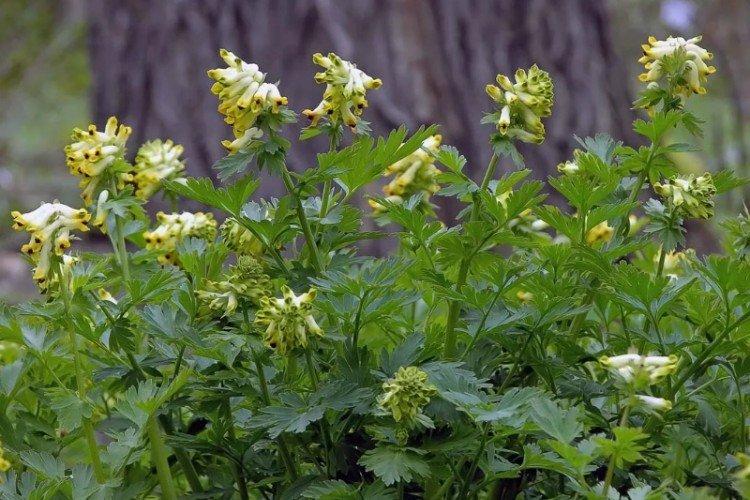
Dense corydalis
She prefers light areas or light partial shade under tree crowns. From a tiny tuber up to 1.5 cm in diameter, neat thin stems up to 25 cm grow.
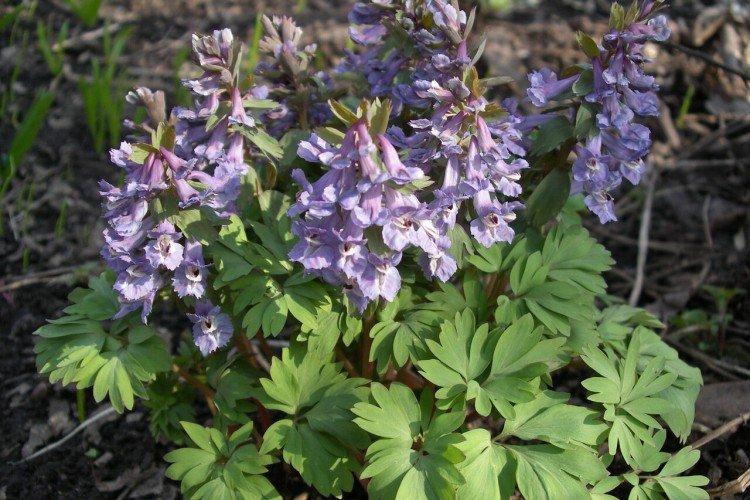
Crested Marshall
The southeastern variety stands out for its delicate cream or golden flowers. From below, the shoots are covered with a thin reddish bark.
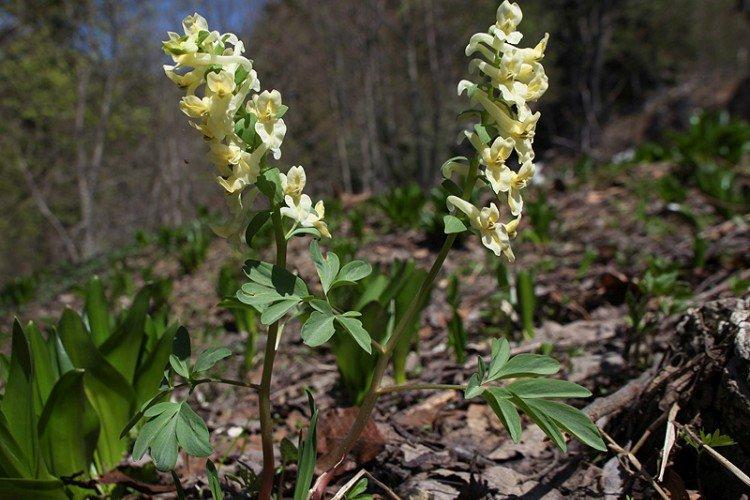
Hollow crested
The taller species, up to 40 cm in height, prefers the neighborhood of deciduous trees. A tall, bare peduncle with a cylindrical inflorescence of a dark purple hue grows from triangular toothed leaves.
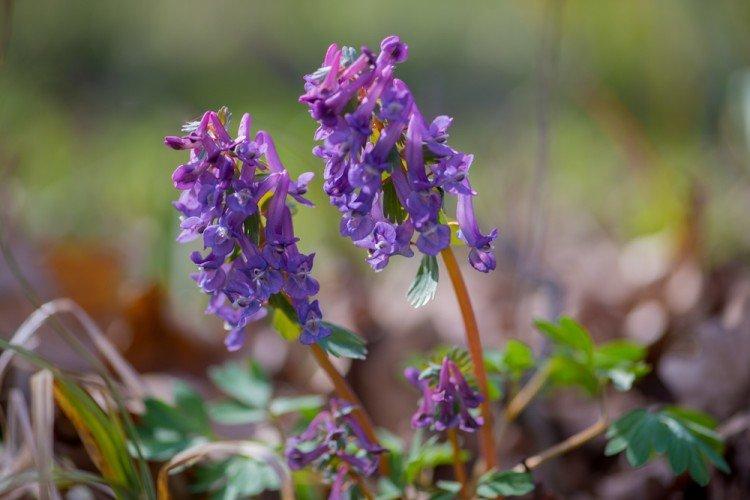
Doubtful Corydalis
Despite the name, there is no need to doubt this spectacular and unpretentious look. It can be recognized by the silvery bloom on the leaves and shoots, against which the blue brushes look even softer.
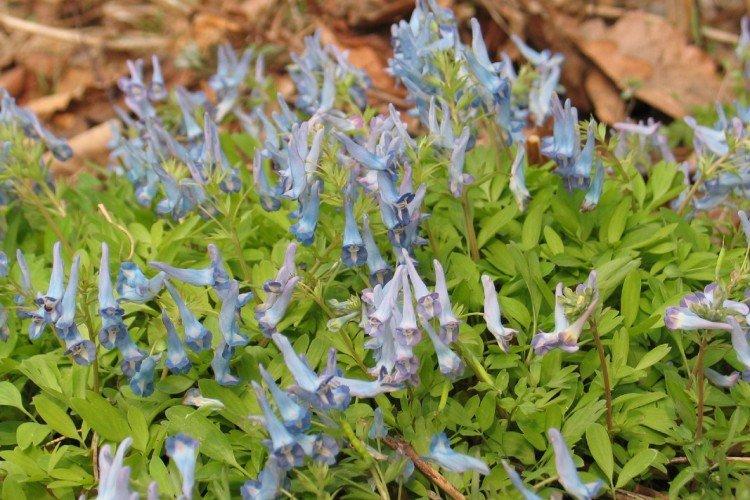
Corydalis care
The only drawback of the corydalis is that a young plant accumulates strength for a long time. But in the future, an adult bush is no longer a hassle!
Temperature and lighting
Corydalis needs bright and constant lighting, but this does not interfere with planting it near tall trees. The fact is that it grows at a time when the crown of the tree is just beginning to form and has not yet cast a shadow.
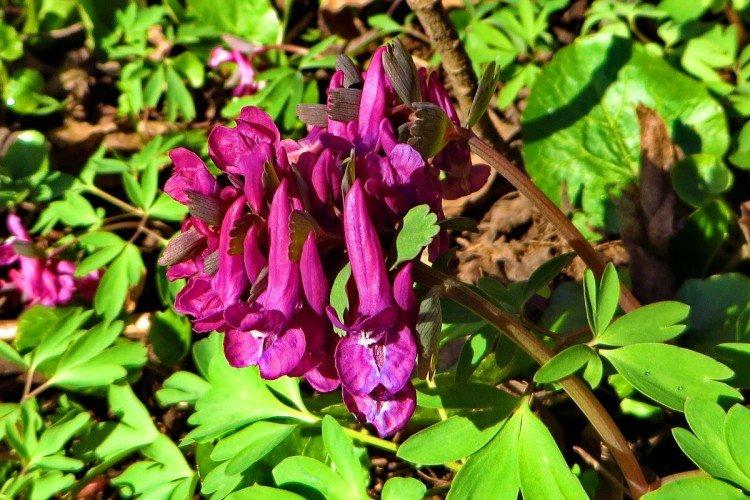
Watering
Corydalis is sensitive to drought, but the period of its active development falls exactly on the rainy season and snowmelt. Therefore, you do not need to water it additionally.
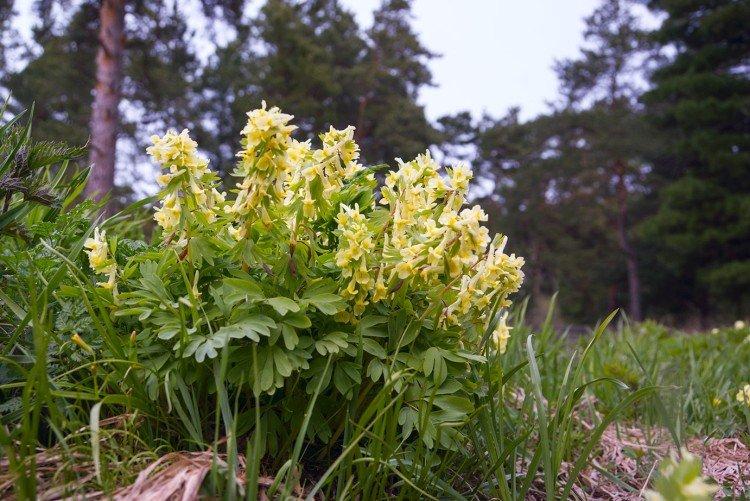
The soil
For Corydalis, a slightly acidic or neutral, but always very loose soil is needed. If the soil is too heavy, add sand, gravel and crushed stone to it. Be sure to need good drainage or some alternative way of removing moisture, otherwise the roots will rot.
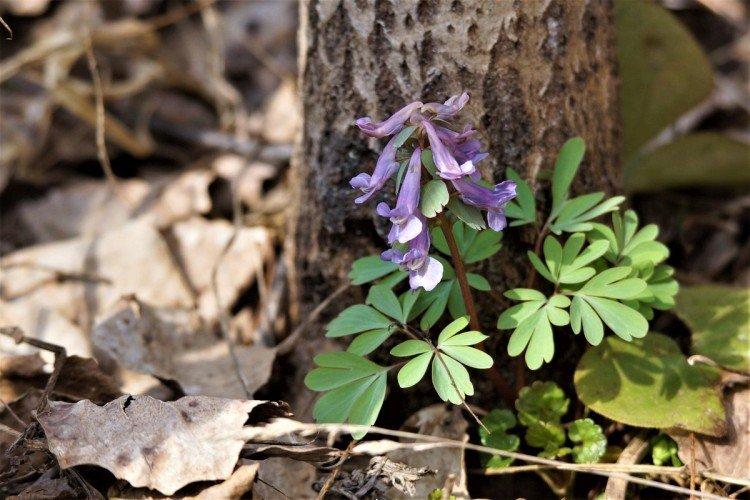
Fertilizers and feeding
Additionally, only forest species of the corydalis need to be fed. Moreover, it is better to use leaf humus and compost before planting, and then mulch the site with organic matter.
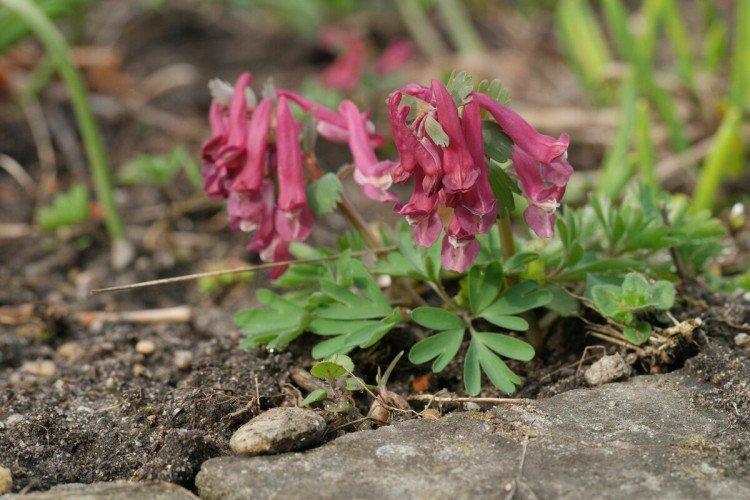
Wintering
Wait until the ground part of the plant dies off on its own, and carefully cut it off near the ground. No more preparation is needed. The plant's root system is deep enough to withstand frost, heat and trampling.
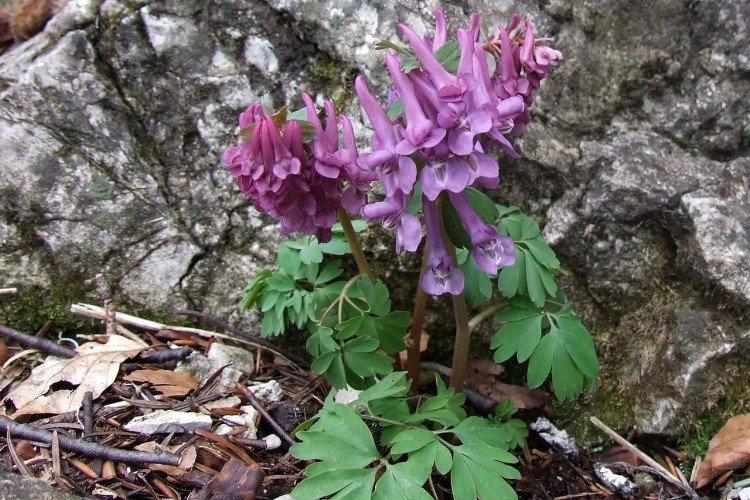
Corydalis planting and reproduction
Fresh seeds are planted immediately after harvesting in a moist peat-sand mixture. Corydalis grows slowly, so only young leaves develop in the first year. Then she needs a period of rest in a cool place, but with good lighting. The next year, you can plant the corydalis in the garden, but such seedlings will bloom in another 3 years.
It is easier and faster to use side tubers. In the middle of summer, plant several pieces at once in the ground - that's the whole procedure. Adult large tubers are simply cut, treated with charcoal and planted in the same way.
All procedures, including a simple transplant, must be carried out quickly, because the roots are very fragile and sensitive to drying out. Small tubers are buried 5-7 cm, and large ones - 10-15.
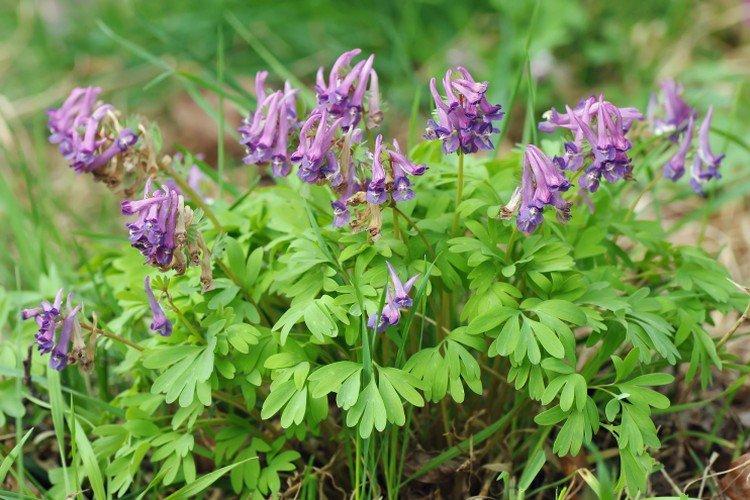
Pest and disease control
Corydalis most often suffers from root rot due to stagnant water in the ground. Therefore, it is important to control the situation, otherwise severely damaged plants will have to be removed. Use fungicides immediately at the first symptoms.
Insects almost do not threaten the Corydalis, because it grows early. But mice and moles pose a serious threat to the root system, gnawing through everything in their path. So we recommend that you get baits and traps in advance.
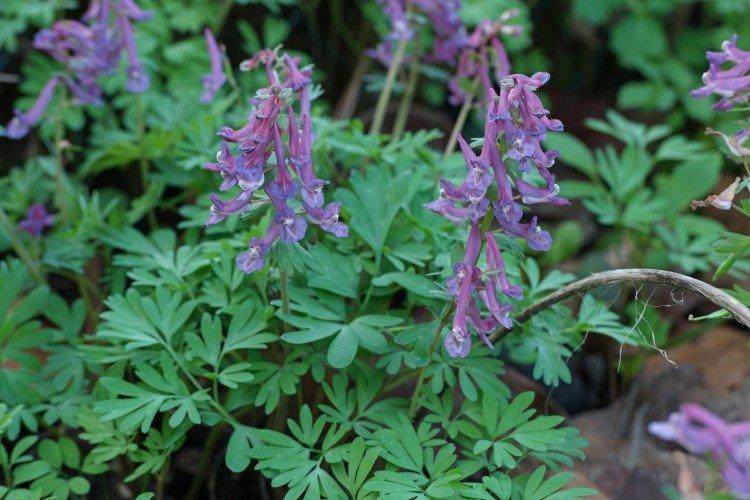
Corydalis - photo
The unusual shape of crested buds always attracts attention and arouses interest. So we could not deny ourselves the pleasure and prepared a large selection of photos with this beautiful plant!
